FOURTH EYE
By Joel Sy Egco
RSF Data: PH press better under Duterte
Share
NUMBERS do not lie. People do.
It is utterly appalling, if not patently detestable, for some misguided or misinformed sectors to paint a bleak picture of the true state of press freedom in the country when scientific facts clearly show that the Philippine press is in a far better situation (read: FREER) under President Rodrigo Duterte than his immediate predecessors.
It is indeed revolting both to conscience and intellect that a few self-righteous members of the media profession and their credulous ilk could amplify such an abomination as if it were Bible truth, replete with fallacies and twisted lies.
For so many years, we have been accustomed to being fed that abhorrent notion about the “shrinking space for media in the Philippines” and its equivalent sophistry.
But there is always a time for reckoning and a time to set the records straight.
QUESTION: Is Philippine media “worse” under Duterte?
Answer: “NO!”
Let me give you the numbers and explain in scientific terms how we have been taken for a fool by some self-proclaimed purveyors of truth, using the same data they used to peddle their prevarications.
Even before President Duterte assumed office after winning the elections in 2016, he had been bedeviled for speaking frankly against malpractices in the media profession which, for all its intents and purposes, some of his rabid critics have capitalized on. Foremost of their weapon to vilify the Duterte administration is their reckless and biased utilization or weaponization of the annual Press Freedom Index released by the Reporters Without Borders (RSF).
Reporters Without Borders
Headquartered in Paris, RSF is a non-profit and non-governmental organization known for advocating press freedom. Or, so they claim.
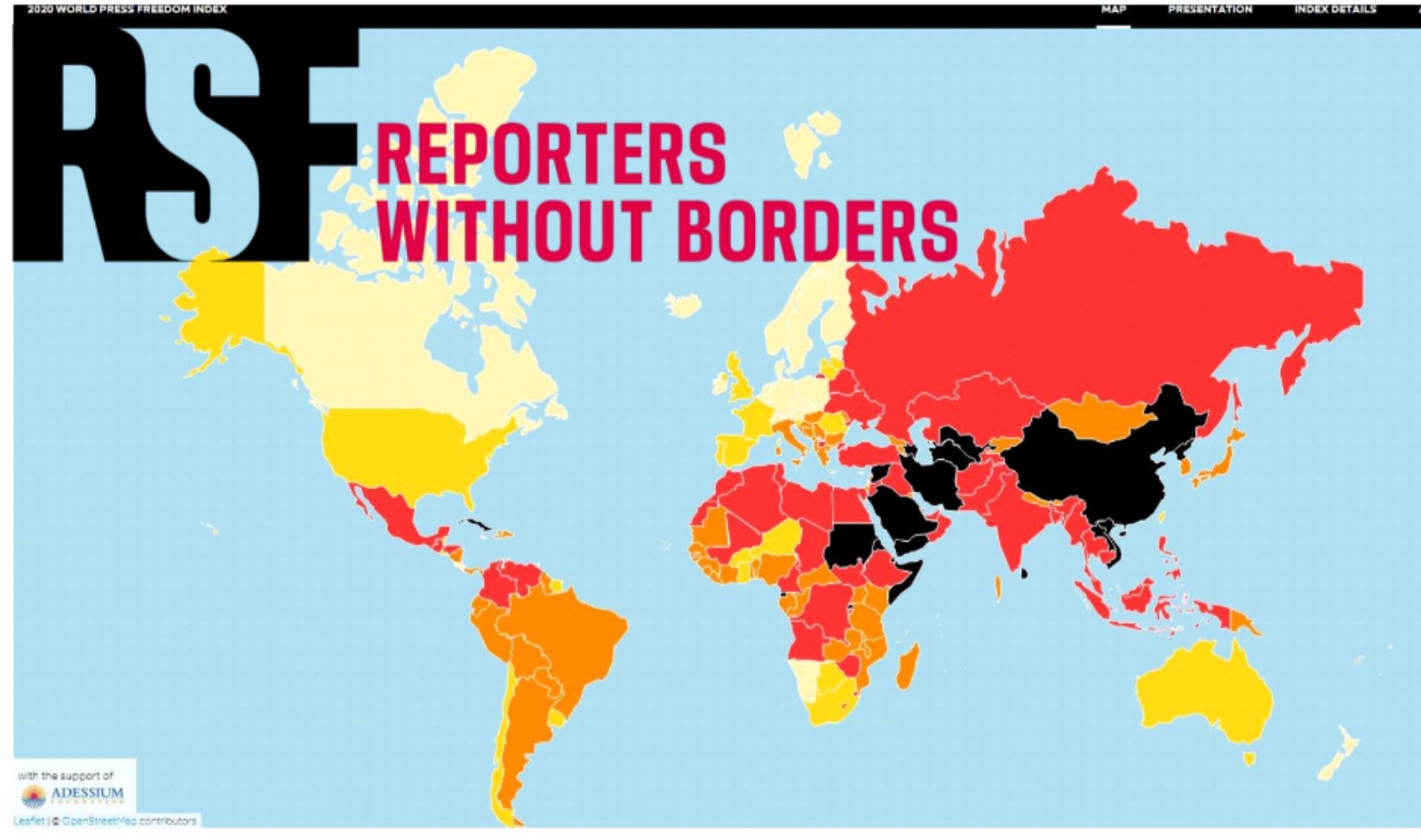
Its advocacy is founded on the belief that everyone has the right to access news and information, inspired by Article 19 of the Universal Declaration of Human Rights.
According to RSF, the organization aims to defend imprisoned or persecuted journalists expose mistreatment and torture of journalists, provide financial aid for struggling media workers, and promote journalists’ safety. RSF says that it works closely with various local and regional press freedom groups in each country.
RSF says that it puts pressure on governments through publicity campaigns and protest letters to raise awareness on press freedom. The organization is best known for publishing an annual report of rankings of countries based on their degree of press freedom. This report is known as the World Press Freedom Index (WPFI).
So, it is all about “publicity campaign.” There you go.
World Press Freedom Index
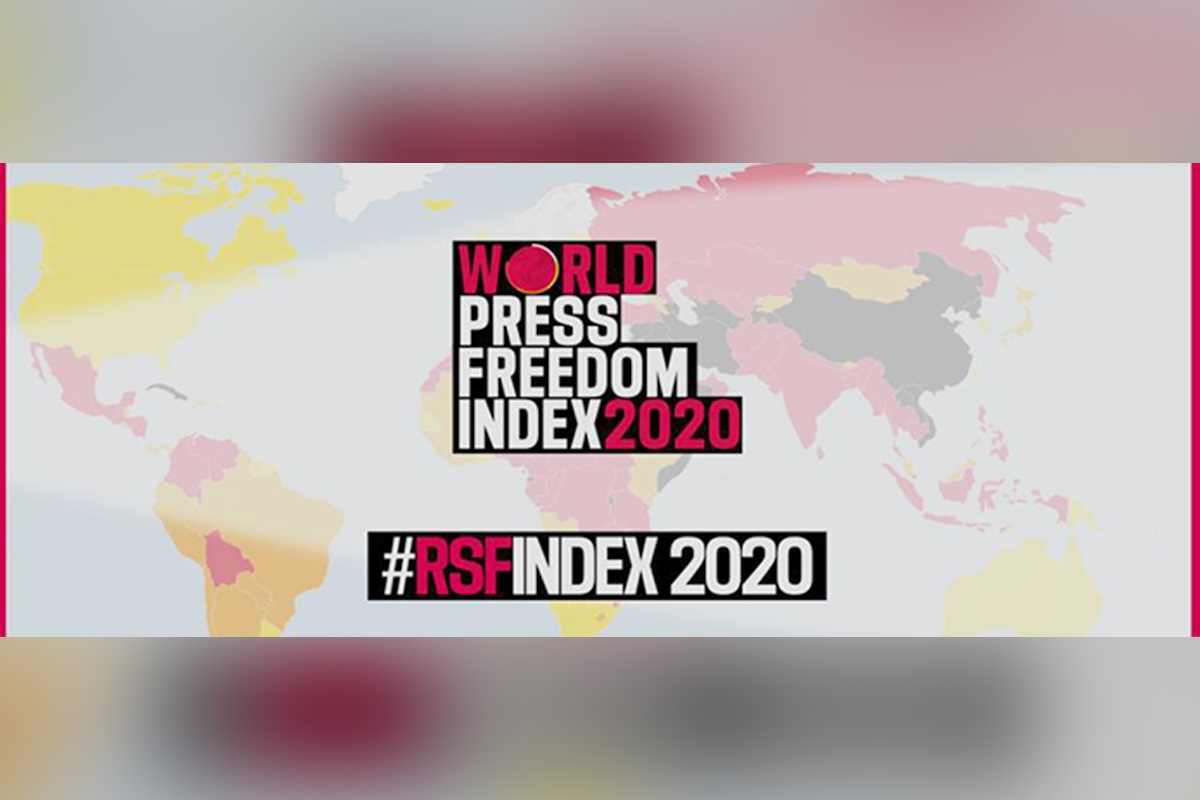
Published since 2002, the index is based on RSF’s own assessment of the countries' press freedom record on a year on year comparison. The Index ranks 180 countries and regions according to the level of freedom available to journalists and the efforts made by governments to respect such freedom. It does not, however, measure the quality of journalism. The index is quoted by news organizations and diplomats worldwide.
How is the index computed and compiled? 1
According to RSF, “the degree of freedom available to journalists … is determined by pooling the responses of experts to a questionnaire devised by RSF. This qualitative analysis is combined with quantitative data on abuses and acts of violence against journalists during the period evaluated. The criteria used in the questionnaire are pluralism, media independence, media environment and self-censorship, legislative framework, transparency, and the quality of the infrastructure that supports the production of news and information.”
RSF explained that to compile the Index, “RSF has developed an online questionnaire focusing on the subjects specified above… The questionnaire is sent to journalists, media lawyers, researchers, and other media specialists selected by RSF in the 180 countries and regions covered by the Index. Each country and region is assigned a score based on the answers provided by these experts and on the figures for acts of violence and abuses against journalists during the previous year.”
Has Philippine media “Worsened” under Duterte?
According to the index, the worst year for the Philippines was in 2010 when it ranked 156th out of the 180 countries surveyed by RSF around the world.
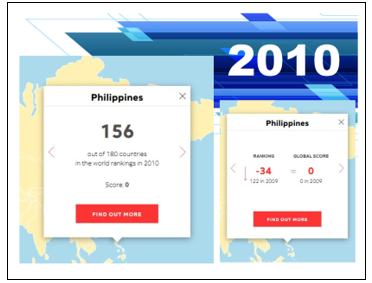
PH dropped by 34 places due to the Ampatuan Massacre that happened in November 2009 during the term of President Gloria Arroyo. Ten years later, on December 19, 2019, the principal suspects in that gruesome massacre have been CONVICTED by the court, well within the term of President Duterte.
Now, let us take an OBJECTIVE look on how the Philippines fared in the Press Freedom Index for the TEN (10) year period beginning 2011 up to 2020. The table below is a compilation of the annual PFI as reported by RSF. I strongly doubt if RSF, or any of its officials, can belie their own data.
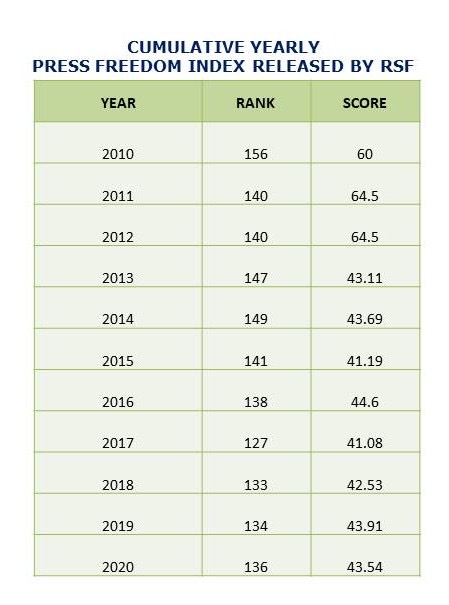
To better appreciate the facts, the country’s ranking in the RSF’s Press Freedom Index is presented here in a graph. The RED bar represents the ranking in 2010 (Arroyo exit-156th), YELLOW is Aquino (2011-2016) and GREEN is Duterte (2017-2020).
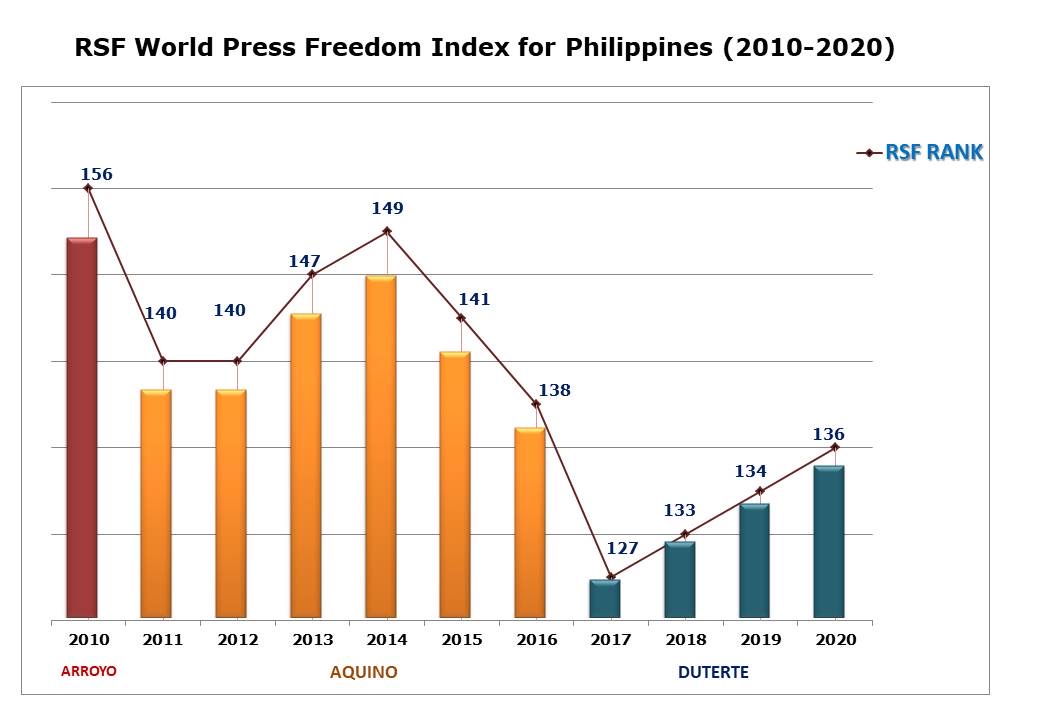
Using the RSF’s own data which have been used and exploited extensively by government critics to portray an “evil” image of President Duterte, it can be easily gleaned that his detractors have been lying all along. Sadly, the RSF only reports on a year-on-year basis, which is highly vulnerable to MISINTERPRETATION with regard to the general and particular media environment for every political administration or regime change. A loophole in the RSF reporting system, so to speak.
Certainly, judging from the cumulative year-on-year report of the RSF itself, THERE HAS BEEN NO SHRINKING OF MEDIA SPACE FOR THE PAST FOUR YEARS OF THE DUTERTE ADMINISTRATION BECAUSE THE COUNTRY'S RANKING IN THE PRESS FREEDOM INDEX REMAINS LOWER THAN AQUINO’S BEST (138TH).
In fact, the country’s ranking on the RSF PFI for the past four years (2017-2020) remains better than the Aquino administration’s exit BEST (2016).
So, what “shrinking space” are President Duterte’s rabid critics talking about?
Ergo, President Duterte’s detractors are either ignorant or clueless or even outrightly stupid for not seeing the entire picture. Bluntly, I say, maybe they are just simply, purely… WICKED.
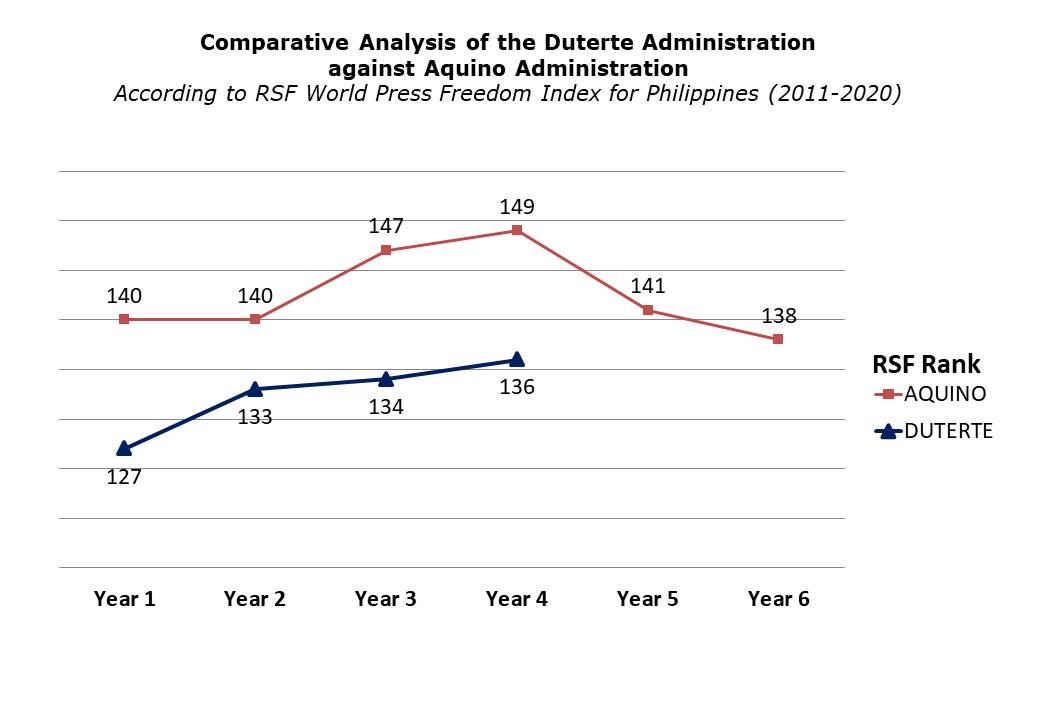
There is also no truth to critics’ claims that the present administration is clamping down much harder on journalists as shown by the drop in the country’s ranking over the years. Again, the facts show otherwise.
In 2017, the steep improvement could be traced primarily to the introduction of TWO landmark measures by the Duterte administration. First and foremost is Executive Order No. 2, which implemented a government-wide Freedom of Information (FOI). Secondly, the President’s very first administrative order, Administrative Order No. 1 that created the Presidential Task Force on Media Security (PTFoMS), the first of its kind in Asia and in the world that aims to protect the Life, Liberty, and Security of all Media Workers.
More importantly, on the matter pertaining to the country’s “drop” in the index, data taken from RSF database shows that there was only a one-point drop in the ranking during President Duterte’s third year in office, and only a slight two-point drop in his fourth year in office. Compare that to the seven-point drop during Aquino’s third year as president and you will know the difference. Let us not forget the precipitous 34-point drop in the index during the last year in office of President Arroyo. Again, all of these data are taken from the World Press Freedom Index.
Are we seeing any precipitous drop in the ranking under President Duterte? Absolutely not. Ask any reasonably minded person and he will characterize the drop in the country’s present ranking in the index as merely “slight” or “marginal”. Statistically speaking, the supposed drop is well within the margin of error of any study. Take that!
Critics’ bare claims that Duterte is clamping down on press freedom is really just that, all talk and without any leg to stand on. RSF’s data show beyond doubt that the media environment in the country has dramatically improved since 2010, especially under President Duterte.
RSF’s index also reveals that the state of the country’s press freedom is much better than in most of its Southeast Asian neighbors. The index clearly shows that the Philippine press is freer under Duterte than in Thailand (140), Myanmar (139), Cambodia (144), Brunei (152), Singapore (158), Laos (172), or Vietnam (175). Moreover, there is no denying the fact that press freedom is better protected in the Philippines than in mighty China which is currently ranked at no. 177 in RSF’s index.
The World Press Freedom Index has proven that the Philippines remains on top of most of its ASEAN counterparts and shares the top three spots along with Indonesia and Malaysia, two countries that have stricter media controls.
Indeed, the Philippine press is in a far better situation under President Duterte than his immediate predecessors or most of its neighbors in South East Asia. Just let the evidence speak for itself.
As I said earlier, numbers do not lie. Only people do.
References:
https://rsf.org/en/world-press-freedom-index
https://en.wikipedia.org/wiki/Reporters_Without_Borders
https://www.britannica.com/topic/Reporters-Without-Borders
Comments
About the Columnist
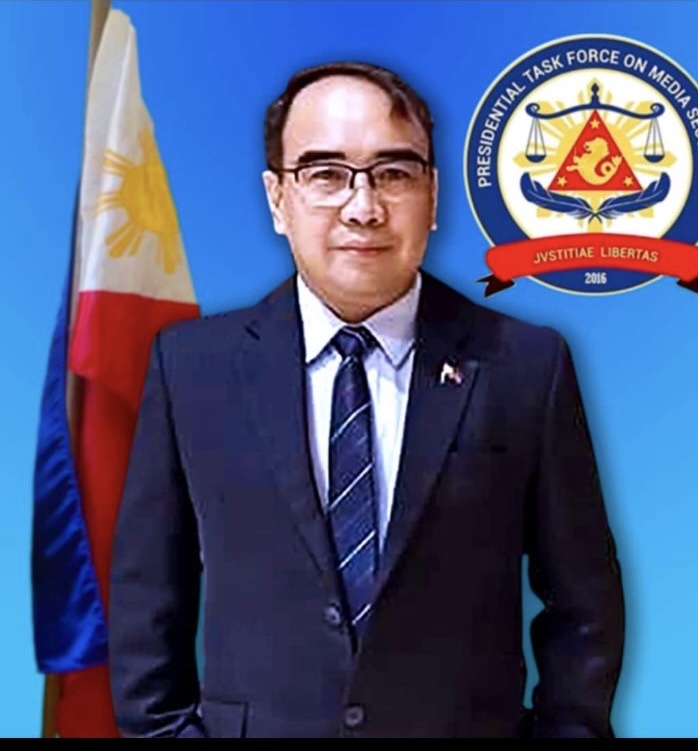
Joel Sy Egco is the Executive Director of the Presidential Task Force on Media Security and concurrent Supervising Undersecretary for the Philippine News Agency. He is the former president of the National Press Club of the Philippines.
